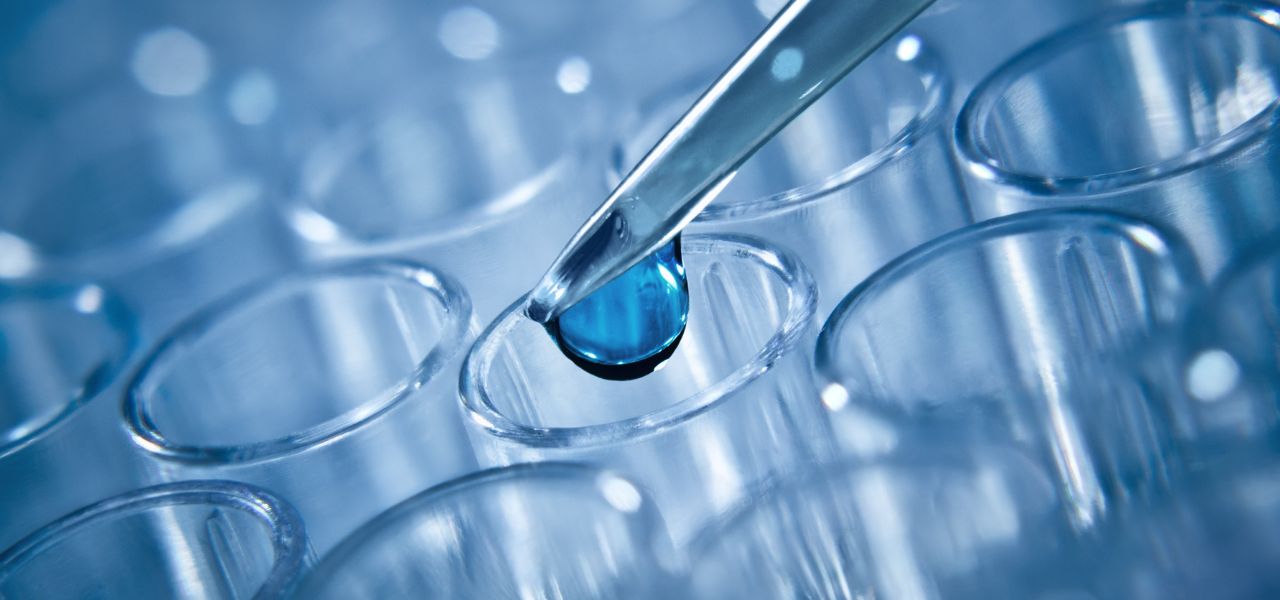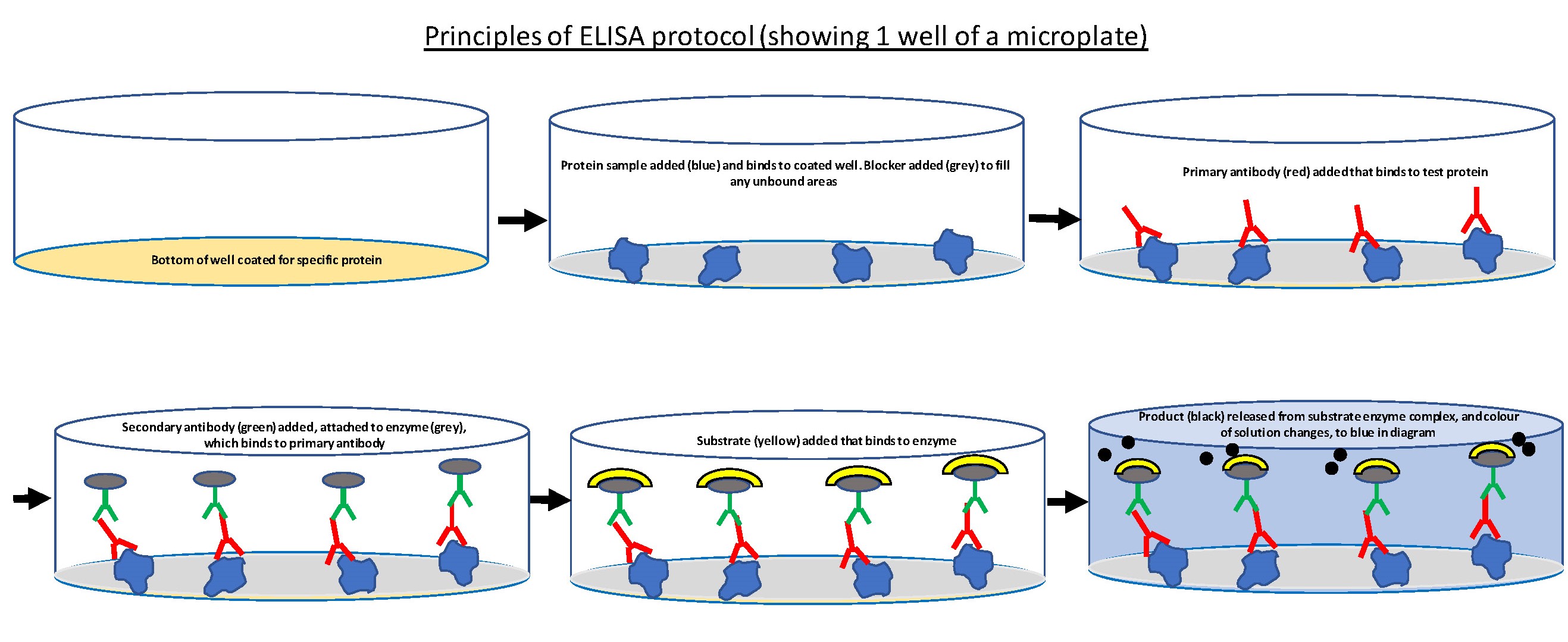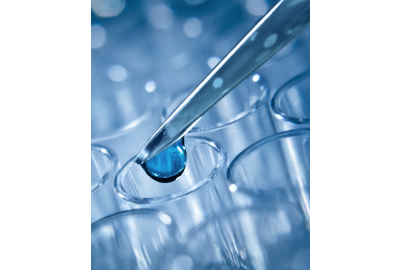



ELISA is a way of detecting proteins in a solution, using antibodies and linked to a colour-changing enzyme-substrate marker.
The protein under test is bound to a solid surface (the bottom of a microplate) in one of 2 ways: directly to the plate (direct ELISA) or via a linked antibody (capture ELISA).
It is because of the highly specific nature of antibodies to their targets that this has become a hugely popular tool to detect levels of protein/peptide/antibodies and hormones in solution, and it is widely used in the medical and research industries.
Most ELISA kits intended for educational use will be direct ELISA with the base of the plate pre-prepared for the sample protein.


The basic steps to ELISA are:
- Fix the antigen (protein sample) to the plate (‘coating/capture’).
- Add a solution to block any unbound areas of the plate (‘blocking’) this can be an irrelevant protein, to which the antibody will not bind, or other solution.
- Add the specific antibody that will bind to the protein, if present.
- Add the antibody-enzyme complex.
- Add the substrate that binds to the enzyme and if products are formed (if the substrate binds, i.e. if the protein is present) there will be a change colour in the well of the plate.
- There are kits available where you can also quantify the amount of protein present, using standard curve techniques.
Using the ELISA test kit
Watch our helpful step-by-step video guide to using our bestselling ELISA kit.
We show you what's included in each kit, how to set up and complete your experiment, and the results you can expect to see.









